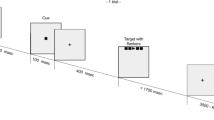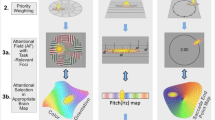Summary
Movement of large portions of the visual field can induce a static observer to experience illusory self-motion, changes in perceived orientation and motion sickness. Two experiments were performed to determine whether susceptibility to motion sickness might be related to an inability to ignore misleading visual information for orientation, measured here in terms of the magnitude of the apparent tilt of the vertical induced by rotation of the visual field about the line of sight. Significant and additive effects of sex and motion sickness susceptibility were demonstrated. Females susceptible to motion sickness proved highly inaccurate when attempting to set a line to the vertical with rotation of the background, while males resistant to motion sickness were the most accurate at this task. Two possible explanations are discussed, the first suggesting subclinical intersubject differences in otolithic sensitivity, and the second postulating deficiencies in intersensory integration. Parallels are drawn with the patterns of multisensory coordination for postural orientation seen in children and in patients with benign paroxysmal positional vertigo.
Similar content being viewed by others
References
Black FO, Nashner LM (1984) Vestibulo-spinal control differs in patients with reduced versus distorted function. Acta Otolaryngol [Suppl] (Stockh) 406:110–114
Bles W, De Jong HAA, Oosterveld WJ (1984) Prediction of sea-sickness susceptibility. In: Motion sickness: mechanisms, prediction, prevention and treatment. Proceedings of the AGARD symposium, May 1984, Williamsburg, Va. Loughton, England, pp 27(1)–27(5)
Clément G, Jacquin T, Berthoz A (1985) Habituation of postural readjustments induced by motion of visual scenes. In: Igarashi M, Black FO (eds) Vestibular and visual control on posture and locomotor equilibrium. Karger, Basel
Dichgans J, Brandt T (1973) Optokinetic motion sickness and pseudo-coriolis effects induced by moving visual stimuli. Acta Otolaryngol(Stockh) 76:339–348
Dichgans J, Diener HC, Brandt T (1974) Optokinetic-graviceptive interaction in different head positions. Acta Otolaryngol (Stockh) 78:391–398
Frank LH, Casali JG (1986) Simulator sickness: a review of its costs, countermeasures and prediction. Aerospace Technology Conference and Exposition, Long Beach, Calif. Society of Automotive Engineers, Warrendale, Pa.
Harris LR, Morgan MJ, Still AW (1981) Moving and the motion after-effect. Nature 293: 139–141
Howard IP (1986) The perception of posture, self-motion and the visual vertical. In: Boff KR, Kaufman L, Thomas JP (eds) Handbook of perception and human performance, vol 1. Sensory processes and perception. Wiley, New York
Lentz JM (1976) Nystagmus, turning sensations and illusory movement in motion sickness susceptibility. Aviat Space Environ Med 47:931–936
Reason JT (1968) Relations between motion sickness susceptibility, the spiral after-effect and loudness estimation. Br J Psychol 59:385–393
Shirabe S, Soda T, Kawano M, Shiraishi K (1986) Eye movements induced by lateral tilt and testing of otolithic function. Arch Otorhinolaryngol 243:153–157
Yardley L (1990) Influence of otolithic and somatosensory information on perceived tilt of the visual vertical. Percept Psychophys (in press)
Young LR (1984) Perception of the body in space: mechanisms. In: Darian-Smith I (ed) Handbook of physiology: the nervous system, III. Academic Press, New York, pp 1023–1066
Author information
Authors and Affiliations
Rights and permissions
About this article
Cite this article
Yardley, L. Motion sickness susceptibility and the utilisation of visual and otolithic information for orientation. Eur Arch Otorhinolaryngol 247, 300–304 (1990). https://doi.org/10.1007/BF00176542
Received:
Accepted:
Issue Date:
DOI: https://doi.org/10.1007/BF00176542




